"Baseball is Zen."
-Tetsuharu Kawakami-
DMB All Time League Player Values
The All Time League Player Set
The DMB All Time League Player set uses players from the Diamond Mind All Time Greatest Players
disk as its base, and adds to that the player sets from three individual
third-party projects: The Nippon All Time player set, the All Time
Negro League player set, and the 19th Century player set. All of these additional player sets are
are the result of much research by the designers, and all are also
evolving over time as more information and statistics becomes
available. This page gives some background about the player sets, and
what can be expected from these sets.
"There ain't much to being a ballplayer, if you're a ballplayer."
-Honus Wagner-
The Major League Player Set
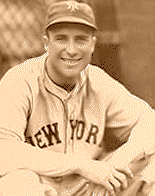 The DMB official product All Time Greatest Players set currently
includes over 1100 of the best players in Major League baseball history
from 1894 to the present. The players are rated based on their best
series of eight (8) consecutive peak years that met a minimum playing
time threshold.
The DMB official product All Time Greatest Players set currently
includes over 1100 of the best players in Major League baseball history
from 1894 to the present. The players are rated based on their best
series of eight (8) consecutive peak years that met a minimum playing
time threshold.
To select each player's best series of seasons, DMB began with his
rookie year, collected enough future seasons to meet or exceed their
minimum playing time threshold, and evaluated that group of seasons.
DMB repeated the process for the seasons beginning with his second
year, then his third year, and so on. The group of seasons that
provided the highest level of league- and park-adjusted performance
became the basis for that player's ratings.
DMB used consecutive peak seasons rather than unconnected peak seasons
because players change with age. A player may start out as a superior
fielder with great speed and enough hitting skills to be an asset at
the top of the order. As he matures, adds muscle, or recovers from a
serious injury, he might move to a less demanding fielding position,
run less, take more walks, and add power. DMB felt that if they rated
such a player based on a mix of early, middle, and later years, they
might end up creating a power hitter who could also play great defense
and steal bases, even if that player never did all of those things at
the same time at any point in his career.
They chose to use peak years rather than entire careers because some
all-time greats had mediocre-to-poor seasons at the start or end of
their careers because they were called up at a very young age and/or
they kept their jobs after they had lost much of their ability. The
rationale was that these stars would not stand out from the crowd as
much as they should.
If a position player had a short career -- less than 4000 plate
appearances from 1894 on -- he was not eligible for this set. If he
reached that threshold but fell short of 6000 PA, DMB used his entire
career. If he exceeded 6000 PA, DMB used his best run of eight
consecutive seasons that include at least 6000 PA total.
Similarly, DMB had two thresholds for pitchers. To qualify for the set,
a pitcher needed at least 200 career starts, 400 career relief
appearances, or a suitable combination of the two. To qualify for the
peak-years treatment, those limits were raised to 250 starts or 500
relief appearances.
This approach favors players with longer careers because their weaker
seasons are excluded. The DMB designers felt that the best players
start sooner and last longer than everyone else, and so this is
justified.
DMB's goal was to end up with about 600 position players and 400-500
pitchers. For position players, they began with the top 75
players at each position from the New Bill James Historical Baseball
Abstract. To that group, they added other players whose peak-year
stats put them right up there with the players Bill James selected. The
list of pitchers extended only to the top 100, so they used their own
methods to choose the rest. In the end, they selected
approximately 400 starting pitchers and about 75 relievers.
Baseball has changed a lot since 1894. Parks are smaller.
Gloves are bigger. We have night baseball and domed stadiums and
artificial turf. The designated hitter rule was adopted by one
league. The ball was dead, then it was lively, then it was juiced
(unofficially). The mound has been raised and lowered. The
strike zone has changed, in the rule book and in the minds of the
umpires, more than once. As a result, one of DMB's biggest
challenges was to level the playing field, to make it possible to
compare performances from the dead-ball era to the high offense era of
the early 1930s to the pitching-dominant 1960s to the home run derby of
the late 1990s. Their discussion on all the methods they
considered, and the ones they used can be found in the two included
text files with the All Time Greatest Players disk: METHODS.TXT and RATINGS.TXT, both made available and linked here for your information.
"Baseball is more than just a game.
It has eternal value.
Through it one learns the beautiful and noble spirit of Japan."
-Suishu Tobitsa-
The Japanese Player Set
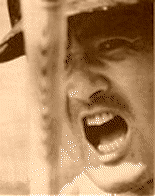 Here are some guidelines that were used in the creation of Players in
the Nippon All Time Player Set, which has provided the Japanese league
players we use in the ATL.
Here are some guidelines that were used in the creation of Players in
the Nippon All Time Player Set, which has provided the Japanese league
players we use in the ATL.
The Japanese Player set was designed to be used with the DMB All Time Players Disk
(Major League). The Japanese set of players has been 'normalized' for
play in the US Major Leagues and not the Japan Professional Leagues. A
minimum of 8 years playing time was needed to be included in this set,
though the emphasis was on longer careers. As well, significant
statistical records needed to be available. Unfortunately this
requirement kept some deserving players out because I just did not have
enough information to extrapolate a career from. This was, after all,
an interpretation based on statisitical description as much as possible
and not on narrative description. Statistics form the base of the
Japanese players, and statistics are the base for the normalization
process.
All ratings are based on statistics first, narrative second, and
relative to the Japanese Leagues. Hitting, bunting, pitching, error
ratings, range ratings, running, passed balls, balks, wild pitches,
throwing arms, everything -- none of it is based against the US
Major Leagues. That is a very important distinction. It was done that
way so the normalization process could be completely done by the game
itself. A minor difference of note is that the age of the ballplayer
and the year indicated is based on the midpoint of the player's career,
as opposed to the DMB's method of indicating age and year from the
first year of the eight-year span they use.
Players selected for this set had to have Hall of Fame, Meikyukai (a lesser Hall of Fame with automatic induction solely dependant on statistics) or Franchise Star status, with the exception of a bias against
players currently playing in Japan. Most of the current Japanese
League players were excluded unless they were currently at the very end
of their career. Additionally, enough players were created at each
position to field 6
complete teams so that a season could be played using this set alone.
Entire careers are used and averaged into a single season. This is
unlike the DMB method of taking the best eight consecutive years and
extrapolating a full season out of that data. Whole careers were
used to help "normalize" play with the All Time Major League set and
account for intangibles that otherwise cannot easily be found in common
statistical databases but have a very real effect on performance.
The Japanese League players here use the average of their career, and
since there are less games per season in Japan they have fewer AB/IP on
the average. Because their career numbers are also not fleshed
out to a full season, but to an average season, many will have
noticeably fewer AB/IP than their DMB ML counterparts. This is because
they were injury-prone, or because there were periods at the beginning
and/or end of their careers where they were not full-time
players. All of the players included in this set were full-time
players at the height of their careers -- they were all stars or
superstars of their team and era. There are no subs here so
scarcity of AB/IP should not be taken as a sign of not being a
full-time player.
All efforts are made to find complete and accurate career statistical
information, but when data was missing it was extrapolated from
available player seasonal data, available league seasonal data and/or
anecdotal information. But the ideal was to have as many
statistics filled in as accurately as possible so that the game itself
could be used to normalize the players to the DMB All Time League set.
10-, 15- and 20-year Eras were used in each player's creation that most
closely conformed to each player's career. A "normalizing"
ballpark based on the statistical differences between the Japan
Professional Leagues and the US Major Leagues was used to "normalize"
play so that the set could be used with the DMB product. Because
of the normalizing factors introduced in the player creation these
players can freely be used in a USA Major League setting.
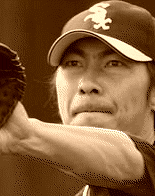 It was decided to let the game itself do the normalizing instead of a
human because the game could easily take into consideration all the
factors involved (that it is programmed to factor in, of course) and
apply them equally onto every player. The player stat line you see for the Japanese League players can be
considered the high boundary of what is possible for that player. For
the Major League and Negro League Sets the player stat line indicates
the mid-level that can be expected, and the seasonal swing can go a
certain percentage (up to roughly 25%) above or below those numbers. No unintended human bias would creep in and
further muddy the already murky waters. It is tough enough to
predict how a US AAA player will perform in the US Major Leagues, let
alone someone of a league with a slightly different set of base
values. Make no mistake, until recently Japanese baseball was not
the same as US baseball. Sure, they used mostly the same rules,
and both grew out of the same beginnings. But each had over 100
years of growth on their own terms before the push to merge
began. Each valued different aspects of the game, put emphasis on
different aspects of the game. In fact, for many decades school
baseball was the epitome of Japanese baseball, and even after the Japan
Professional Leagues began there was (and still is) a major emphasis on
the amateur game -- high school, college and industrial leagues.
It was decided to let the game itself do the normalizing instead of a
human because the game could easily take into consideration all the
factors involved (that it is programmed to factor in, of course) and
apply them equally onto every player. The player stat line you see for the Japanese League players can be
considered the high boundary of what is possible for that player. For
the Major League and Negro League Sets the player stat line indicates
the mid-level that can be expected, and the seasonal swing can go a
certain percentage (up to roughly 25%) above or below those numbers. No unintended human bias would creep in and
further muddy the already murky waters. It is tough enough to
predict how a US AAA player will perform in the US Major Leagues, let
alone someone of a league with a slightly different set of base
values. Make no mistake, until recently Japanese baseball was not
the same as US baseball. Sure, they used mostly the same rules,
and both grew out of the same beginnings. But each had over 100
years of growth on their own terms before the push to merge
began. Each valued different aspects of the game, put emphasis on
different aspects of the game. In fact, for many decades school
baseball was the epitome of Japanese baseball, and even after the Japan
Professional Leagues began there was (and still is) a major emphasis on
the amateur game -- high school, college and industrial leagues.
Often it is noted how the Major League teams trounced the Japan League
teams early in their rivalry. But seldom is it mentioned that it was
the differences in the style of play that accounted for the lopsided
results. It was not wholly talent disparity.
The Japanese played a very orderly and strict game reminiscent of a
choreographed dance routine, while the Americans played a wide-open and
wild game that tried its best to bend the rules if not break them
outright. The Japanese stuck to their 'proper' way of playing
even though the Americans exploited the ritualistic way the Japanese
played. For example, the Japanese interpreted "sacrifice bunts"
literally as in the batter intentionally sacrificed his at-bat --
therefore he did not run to first base, and the runner would be given
the next base. It was a scripted play. The Americans, seeing this,
would throw the runner out and then throw the batter out while he stood
at home plate. The Americans were 'guests' and so their 'rudeness' and
'unsportsmanship' at not following the Japanese unwritten rules of
baseball was tolerated, but not emulated. If the talent level
were exactly the same the Americans
would still win an overwhelming amount of games simply because the
Japanese played for the 2-2 tie while the Americans went for broke
every game. An evidence of the difference between cultural
interpretations of the game is that all the Japanese
players in a game would be happy with a 2-2 tie, while that would never
even be considered a workable outcome in a US Major League game.
The Japanese used the sacrifice as their chief
offensive weapon, while the Americans used the home run, the double,
the extra base on a hit. It was almost as if they were playing
two different games. They were
playing by two different mind sets and two different cultural
foundations even if it was the same game with the same general rules.
There is no doubt that the Japanese Professional Leagues as a whole
were inferior in talent to the US Major Leagues. There have been
many players throughout Japanese professional baseball history who
would not have risen above A or AA ball in the States. But just as in
the US Minor Leagues there are always players with talent to play in
the Majors, and indeed many do make it to the Majors every year --
there were and are in Japanese professional baseball those players who
also have the talent to play in the US Major Leagues if given the
chance. Of those, there are a few in every era who would have
risen to stardom in the US Major Leagues.
The Japanese All Time set includes 145 players at this time (updated to 175 in 10/2005, -ed.), more will
be added in the future. That
is 145 players from 67 years of professional baseball. 145
players out of the thousands who have played. Represented
here is less than the top 1% of all time. Taken into context
we see that this set does not in any way over-rate these players, and
in fact may be said to under-rate them. That there should be a handful
that excel even when compared against the best that US Major League
history has to offer should not be surprising. We are currently in the
very beginning of the Japanese integration into the Major Leagues. When
players from Japan start playing in the Majors at the start of their
careers instead of after 10 years play in Japan, we will definitely see
the true measure of the Asian ballplayer. At that time we all will look
back on the history of Japanese baseball in a different light, one
untainted by racial prejudice.
Because the DMB player creation program itself does the vital and
primary conversion from mere statistical compilations to 'normalized'
end result, even the designer is surprised at some of the
results. That is why he decided to let the computer program
itself handle the normalization conversion; because sometimes
unintended bias or unwarranted assumptions can creep in to the
normalization process if it is left entirely up to human hands.
Here are some sources to find out more about the Japanese League and the players therein include: Japanese Baseball: A Statistical Handbook by Daniel E. Johnson, Baseball's Other All-Stars by William F. McNeil, The Chrysanthemum and the Bat and You Gotta Have Wa both by Robert Whiting, A Zen Way of Baseball by Sadaharu Oh and David Falkner, Slugging It Out in Japan by Warren Cromartie and Robert Whiting, Japanese Baseball SuperStars: Hall of Fame and Meikyukai Player Profiles by Robert Fitts and Gary Engel, The Baseball Hall of Fame and Museum (Japan) http://www.baseball-museum.or.jp/ , Japan Baseball Daily www.japanbaseballdaily.com/ , The Professional Baseball organization of Japan www.inter.co.jp , Japan Ball www.japanball.com , Japanesebaseball.com www.japanesebaseball.com , BaseballGuru.com www.baseballguru.com , BaseballLibrary.com
www.baseballlibrary.com ,JBall ww1.baywell.ne.jp/fpweb/drlatham/site/sitemap.htm , Jim Allen's Japanese Baseball Page
http://www2.gol.com/users/jallen/jimball.html , Rob's Japanese Cards
www.robsjapanesecards.com/ , SABR Asian Baseball Committee
http://www.robsjapanesecards.com/asianbaseball.html .
"A homer a day will boost my pay."
-Josh Gibson-
The Negro League Player Set
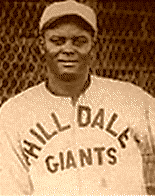 The DMB ATL contains, at this writing, 104 Negro League Players (updated in 10/2005 to 130, -ed.).
Reliable statistics for these players are very hard to come by, as
anyone who has even a passing interest in the subject has no doubt
discovered. However, using a variety of sources, one can put together a
fairly accurate picture for many of these players. What we have here in
the ATL is what I believe to be as accurate as possible a representation of those players.
The DMB ATL contains, at this writing, 104 Negro League Players (updated in 10/2005 to 130, -ed.).
Reliable statistics for these players are very hard to come by, as
anyone who has even a passing interest in the subject has no doubt
discovered. However, using a variety of sources, one can put together a
fairly accurate picture for many of these players. What we have here in
the ATL is what I believe to be as accurate as possible a representation of those players.
First and foremost, there are two Negro League scholars whose work is
accepted by baseball historians as being over and above the others. In
fact, their work is considered the gold standard, if you will, in this
field. These two authors were relied upon heavily for my Negro League
player creation. They are John Holway and James Riley. Their research
was used to form the base from which the ATL
Negro Leaguers were created. To fill out the picture, either get
validation or an opposing view, I used eyewitness accounts from Major
League players whenever one was available, and also several other
sources which are cited in the following paragraphs. When there were
conflicting views or numbers, I defaulted to the two men mentioned
earlier.
Luckily for us, major Leaguers often barnstormed against black players,
and box scores from those contests have been preserved down through the
years. This provides a good context in which to view these players'
abilities. In these games, the Major Leaguers lost more often than they
won, and by a good margin. The official record tells us that the Negro
Leaguers won 89, the Major Leaguers 67. There was also 1 tie. That
comes out to a .571 winning percentage for the Negro Leaguers. For
context, these barnstorming teams were of uneven quality; sometimes
they were All Star teams, sometimes the reigning Champs, sometimes just
a couple of stars supported by lesser players. It is worthwhile to
note, however, that these games were played in an atmosphere of overt
racism. Many Major Leaguers were loath to lose a contest to a black
team. The figures speak for themselves, eloquently so.
 The Major Leaguers also played many Cuban teams during the time when
"coloreds" where prohibited from the Major League game. The Cubans won
40 of 92 contests, or a .435 winning percentage (all figures per
Holway, The Complete Book of Baseball's Negro Leagues"). These factors
were considered when analalzing statistics for individual players.
The Major Leaguers also played many Cuban teams during the time when
"coloreds" where prohibited from the Major League game. The Cubans won
40 of 92 contests, or a .435 winning percentage (all figures per
Holway, The Complete Book of Baseball's Negro Leagues"). These factors
were considered when analalzing statistics for individual players.
Many Negro Leaguers also played in the Cuban and Mexican Leagues. This
data was also considered, and weighed against their Negro League stats,
as well as those compiled against barnstorming Major Leaguers. The
Negro Leagues also had "dead" and "lively" ball periods, just as the
majors did. These factors had to be considered as well. As you can no
doubt see, this is not an exact science. I think what we have here, for
our purposes, is a very good representation of how these players would
compare against the more well known major Leaguers in our ATL.
Other sources used were the Macmillan Baseball Encyclopedia and Total Baseball,
which contain some incomplete stats and/or overviews of the Negro
Leagues. Many Internet resources were used, in varying degrees, as
well. There are too many to list here, but
http://www.blackbaseball.com/, http://www.negroleaguebaseball.com/, and
http://www.nlbpa.com/ are all good sources if you have an interest in
this subject.
The ATL Negro Leaguers will no doubt evolve over time. I expect the
current players will be refined to a certain degree as the seasons go
by. I also expect to add players who have been excluded in this
first set. They won't all be stars, but they will be significant in
some way. I hope these players will add to our enjoyment of both
baseball history and this league of ours.
"No human mind can measure the blessings conferred
by the game of base ball on the soldiers of the Civil War."
-Al Spalding-
The 19th Century Player Set
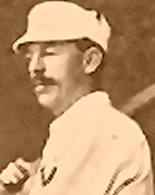 As
different a game as Japanese Baseball used to be to American Baseball,
19th Century Baseball is just as alien a game, if not more so. Many
important rules were different, the dimensions of the diamond were
different, the parks were different, the bats were different, the balls
were different, the gloves . . . All in all, the concept of
offense and defense was different in the 19th Century. Umpiring was
different. Home Field Advantage was different. Everything was different
except the basics.
As
different a game as Japanese Baseball used to be to American Baseball,
19th Century Baseball is just as alien a game, if not more so. Many
important rules were different, the dimensions of the diamond were
different, the parks were different, the bats were different, the balls
were different, the gloves . . . All in all, the concept of
offense and defense was different in the 19th Century. Umpiring was
different. Home Field Advantage was different. Everything was different
except the basics.
That made the normalization process a bit difficult for me. Not the
mechanics of the thing, but the concept behind how the 19th Century
ballplayers should translate into 20th Century ballplayers. I decided
to use the same system I used for the Japanese Leaguers -- namely, use
the actual stats of the players and depend on the game's internal
translation process to compare, contrast and blend the 19th Century Era
and Ballpark used to the 20th Century Average that the league uses as
an Ideal. I also made the decision to, like the JLers, average the
player's whole career and display those averages in the player's stat
line instead of pro-rating 8 'best consecutive seasons' to 154 games. I
think we can do the pro-rating in our heads, and it is helpful to
always have a reminder of how different even the number of games per
season was back then.
I could have applied the math directly to each player, but of necessity
the formulation would be simpler than that of the game program. This
way also leaves a bit of mystery in the player -- "He did this in the
rough-and-tumble 19th Century, how will he fare in the elegance of 20th
Century Baseball?"
Above all I sought to maintain the character of 19th Century ball at
the end result of the normalization process. I didn't want guys who
averaged 20 triples and 5 homers in a 154-game projected season,
suddenly averaging 5 triples and 20 homers. While that would make the
19th Century player -into- a 20th Century player, it destroys the
uniqueness of the 19th Century ballplayer and the individuality of the
19th Century player is gone. What we remember of the player's abilities
have been replaced with a new set of skills. Neither did I want a
straight translation of stats into the 20th Century -- the above player
shouldn't play exactly the same, 20 triples and 5 homers, in the
drastically new environment of 20th Century Baseball. In the worst case
scenario we would have the 19th Century baserunning and bunting skills
tacked onto a 20th Century home run hitter. I ask you, where is the
19th Century ballplayer in that? No, I prefer a normalization
process that preserves the identity of the 19th Century ballplayer in
the 20th Century setting. There should be a merging of the 19th Century
with the 20th Century to produce recognizable elements of both. I
brought 19th Century, rough-cut lumber for bats and all, into the 20th
Century, well-crafted gloves, rulebook and all. I think I was
successful.
Yes, pitchers will not be as dominant, and hitters not so versatile.
Certain players of both sorts will struggle in the new setting. Certain
others will find their skills a good match. A lot will have to do with
the parks they play in, the players around them and the style of ball
their team plays. It is important to realize that one of the biggest
changes between 19th & 20th Century ballplay that directly impacts
on the normalization is the incidence of errors. Many 19th Century
pitchers have great ERAs, but have allowed more than twice as many Runs
as Earned Runs. These pitchers will take a hit in the conversion
process because in the 20th Century pitchers did't have to get 4 outs
an inning -- 1 error and 3 outs. However, the extraordinary player of
any era will excel in any era. Superstars of the 19th Century,
especially the batters, will take their place in the league leaders.
The 19th Century had a great deal more variation than the 20th Century.
This is because even within the relatively short period of time between
1871 and 1900 there are very distinct changes in the game, along with
many minor ones, that create mini-eras all their own. Each of these
mini-eras has it's own quiddity. Each will merge into the 20th Century
in its own inimical way. But the players will have something they never
had before, they will be able to compete across the Rules Barriers and
Changes in Style and Equipment on their own merit. Major rules changes
occured in the 19th Century that summarily ended the careers of many
great players. Some of those greats are represented in this set, and if
nothing else we are giving them the chance to bring their own game onto
the stage with all the rest of baseball history for the first time.
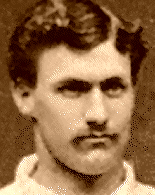 A few words on each Mini-Era.
A few words on each Mini-Era.
1871-1875 Short schedules, no gloves, batters can call for a high or low pitch
1876-1884 Gloves make their entrance and evolve, umpires acquire more latitude
1884-1891 Overhand pitching comes into vogue, variable number of balls for a Walk
1892-1893 Bats could no longer have a flat side, mound pushed back to 60'6"
1894-1900 Fouls become Strikes, and various other foul ball rules are born
The above lines are only an example of the changes in each period.
Rules were changed wholesale at times, and the dimensions of the field
changed more than once, as well. A couple of DMB restrictions on which
players are eligible for the set
have been relaxed. Because of the short seasons and careers of the
early players the minimums for 1870's players is lowered to 2000 AB,
2000 IP or 8 seasons. The restriction for 1880's players is 4000 AB,
2000 IP or 8 seasons. 1890's players have 5000 AB, 2000 IP or 8
seasons. The operative word here is: "or".
A very important word of warning: many of these players could not
continue to compete when the rules changed. Even incremental rules
changes ended careers, let alone the vast difference of rules between
the 19th Century and 20th Century. Very few of the 19th Century players
would ever have been able to compete in a modern baseball league of any
caliber. We are allowing them to compete by breaking down the barriers
that prevented them from continuing. We are giving them the benefit of
the doubt that they would actually be able to adapt to the new rules
and compete. That doesn't mean they'll be stars, and I especially
caution anyone counting on getting an Ace Pitcher from this century to
think again. More likely we will find a few solid 4th or 5th Starters,
but then again, I won't be surprised if an Ace emerges because the
possibility is always there. A lot depends on all the other factors of
every game of the season. The batters, on the other hand, will fare
better as batters always do. There are a handful of great batters in
the mold of Cobb, Speaker and Hornsby in this 19th Century Set, and
they will be true franchise players. Keep your eye on Ross Barnes, Lip
Pike and Cal McVey as well as the more well-known names like Cap Anson,
Buck Ewing, Dan Brouthers, Monte Ward, Deacon White, Roger Conner and
others. But there are also a lot of good,
steady ballplayers of all kinds in this set, some relatively unknown
and some very much unacknowledged. Wait til you see what some
of them can do with a modern fielder's glove!
There is a problem in the conversion for this period because of the
miniscule numbers of home runs hit. Zero home runs a season (actually,
up to 0.5) in the 19th Century equated to 10-15 home runs in the 20th
Century -- according to the inner game mechanics. Now I think I know
why DMB gave what I think are inflated home run numbers to the Deadball
Era players. I think they ran multiple sims using the ERA-Adjustment
Method I use, and then accepted the game's inflated HR numbers as the
correct normalization translation. I think that conclusion is false as
there will never be a league where the least homers a regular player
hits in a full season is in the double digits. Not even in the steroid
times (hopefully) just past. I think my normalization translation is a
bit better, but by no means do I think it is definitive.
However, having said that, I will note that I have taken special care
in the development of the 19th Century players. I have used specific
Eras corresponding directly to the individual player's career. I have
not used the 10-, 15-, 20-year era method I used with the Japanese
League because the changes in the game in the 19th Century were so
drastic and so many that to allow inclusion of even a single season the
player did not participate in would skew the normalization process.
There is one more important factor to remember: the overall quality of
play in the 19th Century also fluctuated wildly, and widely. This
inflated many seasonal and career statistics as good players and teams
feasted regularly off poorly skilled opponents. How many modern pitcher
can let of over 5 runs a game and still win 253 out of 318 decisions as
Al Spalding did? The 19th Century players we bring into the ATL won't
have that luxury. The quality of play in the ATL is superb and
distributed evenly.
 So,
what to look for and what to avoid when selecting a 19th Century
ballplayer for your ATL franchise? Do not be blinded by the multitude
of innings pitched, complete games and few home runs allowed. Neither
be fooled by their sparkling ERAs. The 19th Century pitchers will allow
many more home runs in much fewer innings, complete very few games
because of the numbers of runs they allow (though they won't get
tired), and have a ERA averaging double the one they display on their
stat line. Look
at the numbers of Unearned Runs Allowed, Runs per Game and the Hits per
Inning. These are the telling numbers. These aspects of 19th Century
Ball are antithema to 20th Century Ball. There will be many less errors
in our league than what was normal in the 19th Century -- on the order
of 75% or more less errors. But most 19th Century pitchers will still
allow more hits than is best for them, even when the
adjustment for normalization is made. This will result in more earned
runs scoring against the pitchers, and consequently raise their ERAs
accordingly. Their Runs Allowed stat will start to look like
their ATL Earned Runs Allowed stat. So, look for both batters and
pitchers who are well-rounded players, and do a little basic research
on the players that interest you. Players with long careers usually
have a lot to offer.Of course, there are
exceptions: Ross Barnes, for example, had a short career way back in
the beginning of Base Ball, but he will do well in the ATL. Barnes had
his career ended by an injury that coincided with a major rule change,
so we don't know how he would have done when the Fair-Foul Bunt rule
took away one of his notable weapons. But here in the ATL he is every
bit the top-level superstar.
So,
what to look for and what to avoid when selecting a 19th Century
ballplayer for your ATL franchise? Do not be blinded by the multitude
of innings pitched, complete games and few home runs allowed. Neither
be fooled by their sparkling ERAs. The 19th Century pitchers will allow
many more home runs in much fewer innings, complete very few games
because of the numbers of runs they allow (though they won't get
tired), and have a ERA averaging double the one they display on their
stat line. Look
at the numbers of Unearned Runs Allowed, Runs per Game and the Hits per
Inning. These are the telling numbers. These aspects of 19th Century
Ball are antithema to 20th Century Ball. There will be many less errors
in our league than what was normal in the 19th Century -- on the order
of 75% or more less errors. But most 19th Century pitchers will still
allow more hits than is best for them, even when the
adjustment for normalization is made. This will result in more earned
runs scoring against the pitchers, and consequently raise their ERAs
accordingly. Their Runs Allowed stat will start to look like
their ATL Earned Runs Allowed stat. So, look for both batters and
pitchers who are well-rounded players, and do a little basic research
on the players that interest you. Players with long careers usually
have a lot to offer.Of course, there are
exceptions: Ross Barnes, for example, had a short career way back in
the beginning of Base Ball, but he will do well in the ATL. Barnes had
his career ended by an injury that coincided with a major rule change,
so we don't know how he would have done when the Fair-Foul Bunt rule
took away one of his notable weapons. But here in the ATL he is every
bit the top-level superstar.
A little research into the different mini-eras will also yield
insights. Do not make the mistake of lumping 1871-75 into the same
categories as 1879-1892, for example. Those two were very different
brands of baseball for both hitter and pitchers. Look for players with
long careers, players who successfully crossed over through multiple
mini-eras. These types should be the superstars of the set. Cap Anson,
for example, ranges his career from 1871 thru 1897 -- the entire
spectrum of the 19th Century game. Regardless of his miniscule worth as
a person, as a ballplayer he is a genuine superstar on the same level
as Ty Cobb and Ted Williams. On the other hand, Al Spalding put up
incredible numbers from 1871-76, but he couldn't compete as a pitcher
once the curve ball come into town. He will have a very hard time
competing in the ATL with his underarm straight ball where there are
overhand, sidearm and variable speed curveballs, sinkers, forkballs,
sliders, spitballs, knuckleballs and much more. But with the right
ballpark, and the right managing strategy, he might be able to help a
club win a pennant. What more would Al Spalding ask?
Here's an example of what a little research can uncover: Al Spink on left field in the early days.
"Left field has always been considered the hardest place to fill in the
outer works." "It was especially hard in the early days of the
professional game, when the pitching was slower than it is now, when
the ball contained more rubber than the ball used at the present time
and when hits to the left field, long rangy hits, were the order of the
day in nearly each and every game." "So it happened that in the
earliest days of the professional game the fleetest men on each team
were assigned to positions at left field." ("The Left Fielders," from
"The National Game," 2nd edition, 1911)
Conversely, right field is where they put the poor fielders to keep
them out of the plays as much as possible. Likewise, third basemen have
an increased significance over their role today. Third baseman were
regarded the same as shortstops are today because there was a lot of
bunting and groundballs down the third base line. Third base was truly
the 'hot corner' back then.
On the plus side, you will notice the baserunning skill of the 19th
Century player is typically high. That is a result of the style and
focus of play. The epitomy of a ballplayer was not the poor fielding,
stationary first baseman who strikes out every game and hits 1 home run
every 4 games. The pre-eminent 19th Century ballplayer was the
'get-on-base-and-score-any-way possible-every-game' type of player.
Consequently, contact hitting and running skills are highlighted. As
well, versatility on defense is common while the single-position player
is rare. Catchers are usually utility players because of the
tremendously rough nature of the position without equipment, or with
the early rudimentary equipment. So don't be surprised to see some
players you know as "Catchers" be listed as "Utility" for their primary
role. These catchers played substantial percentage of games at other
positions, and also played every position during their career. However,
not all positions may be represented for a player because I put a
minimum requirement of an average of 1 game per season at a position in
order for it to be rated. But by listing them as "Utility" they will
get the best cut at these non-rated positions if placed there.
There are 60 players in this set as of this writing. The selections for
this first of two or three parts of the 19th Century player set was
made with five criteria in mind. One, that the earlier players get the
most representation, Two, that the players with long careers be heavily
represented, Three, that nobody begin their career after 1894 because
those later players might find their way into a DMB update. Four, the
superstars be well represented while leaving some prize players for the
next set. Finally, to make sure there is enough player representation
at each position.
"I had heard that Cubans were a deeply religious people.
In two days here, I have learned that baseball is their religion."
-Sam Lacy-

Copyright 2005 DMBATL © All Rights Reserved
Copyright 2005 John Mortimer © All Rights Reserved
Copyright 2005 Edward Mortimer © All Rights Reserved
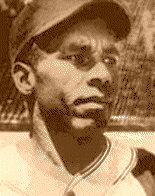

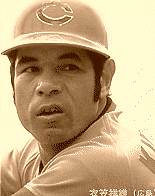
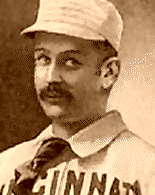





 The DMB official product All Time Greatest Players set currently
includes over 1100 of the best players in Major League baseball history
from 1894 to the present. The players are rated based on their best
series of eight (8) consecutive peak years that met a minimum playing
time threshold.
The DMB official product All Time Greatest Players set currently
includes over 1100 of the best players in Major League baseball history
from 1894 to the present. The players are rated based on their best
series of eight (8) consecutive peak years that met a minimum playing
time threshold.  Here are some guidelines that were used in the creation of Players in
the Nippon All Time Player Set, which has provided the Japanese league
players we use in the ATL.
Here are some guidelines that were used in the creation of Players in
the Nippon All Time Player Set, which has provided the Japanese league
players we use in the ATL. It was decided to let the game itself do the normalizing instead of a
human because the game could easily take into consideration all the
factors involved (that it is programmed to factor in, of course) and
apply them equally onto every player. The player stat line you see for the Japanese League players can be
considered the high boundary of what is possible for that player. For
the Major League and Negro League Sets the player stat line indicates
the mid-level that can be expected, and the seasonal swing can go a
certain percentage (up to roughly 25%) above or below those numbers. No unintended human bias would creep in and
further muddy the already murky waters. It is tough enough to
predict how a US AAA player will perform in the US Major Leagues, let
alone someone of a league with a slightly different set of base
values. Make no mistake, until recently Japanese baseball was not
the same as US baseball. Sure, they used mostly the same rules,
and both grew out of the same beginnings. But each had over 100
years of growth on their own terms before the push to merge
began. Each valued different aspects of the game, put emphasis on
different aspects of the game. In fact, for many decades school
baseball was the epitome of Japanese baseball, and even after the Japan
Professional Leagues began there was (and still is) a major emphasis on
the amateur game -- high school, college and industrial leagues.
It was decided to let the game itself do the normalizing instead of a
human because the game could easily take into consideration all the
factors involved (that it is programmed to factor in, of course) and
apply them equally onto every player. The player stat line you see for the Japanese League players can be
considered the high boundary of what is possible for that player. For
the Major League and Negro League Sets the player stat line indicates
the mid-level that can be expected, and the seasonal swing can go a
certain percentage (up to roughly 25%) above or below those numbers. No unintended human bias would creep in and
further muddy the already murky waters. It is tough enough to
predict how a US AAA player will perform in the US Major Leagues, let
alone someone of a league with a slightly different set of base
values. Make no mistake, until recently Japanese baseball was not
the same as US baseball. Sure, they used mostly the same rules,
and both grew out of the same beginnings. But each had over 100
years of growth on their own terms before the push to merge
began. Each valued different aspects of the game, put emphasis on
different aspects of the game. In fact, for many decades school
baseball was the epitome of Japanese baseball, and even after the Japan
Professional Leagues began there was (and still is) a major emphasis on
the amateur game -- high school, college and industrial leagues. The DMB ATL contains, at this writing, 104 Negro League Players (updated in 10/2005 to 130, -ed.).
Reliable statistics for these players are very hard to come by, as
anyone who has even a passing interest in the subject has no doubt
discovered. However, using a variety of sources, one can put together a
fairly accurate picture for many of these players. What we have here in
the ATL is what I believe to be as accurate as possible a representation of those players.
The DMB ATL contains, at this writing, 104 Negro League Players (updated in 10/2005 to 130, -ed.).
Reliable statistics for these players are very hard to come by, as
anyone who has even a passing interest in the subject has no doubt
discovered. However, using a variety of sources, one can put together a
fairly accurate picture for many of these players. What we have here in
the ATL is what I believe to be as accurate as possible a representation of those players. The Major Leaguers also played many Cuban teams during the time when
"coloreds" where prohibited from the Major League game. The Cubans won
40 of 92 contests, or a .435 winning percentage (all figures per
Holway, The Complete Book of Baseball's Negro Leagues"). These factors
were considered when analalzing statistics for individual players.
The Major Leaguers also played many Cuban teams during the time when
"coloreds" where prohibited from the Major League game. The Cubans won
40 of 92 contests, or a .435 winning percentage (all figures per
Holway, The Complete Book of Baseball's Negro Leagues"). These factors
were considered when analalzing statistics for individual players.  As
different a game as Japanese Baseball used to be to American Baseball,
19th Century Baseball is just as alien a game, if not more so. Many
important rules were different, the dimensions of the diamond were
different, the parks were different, the bats were different, the balls
were different, the gloves . . . All in all, the concept of
offense and defense was different in the 19th Century. Umpiring was
different. Home Field Advantage was different. Everything was different
except the basics.
As
different a game as Japanese Baseball used to be to American Baseball,
19th Century Baseball is just as alien a game, if not more so. Many
important rules were different, the dimensions of the diamond were
different, the parks were different, the bats were different, the balls
were different, the gloves . . . All in all, the concept of
offense and defense was different in the 19th Century. Umpiring was
different. Home Field Advantage was different. Everything was different
except the basics. A few words on each Mini-Era.
A few words on each Mini-Era. So,
what to look for and what to avoid when selecting a 19th Century
ballplayer for your ATL franchise? Do not be blinded by the multitude
of innings pitched, complete games and few home runs allowed. Neither
be fooled by their sparkling ERAs. The 19th Century pitchers will allow
many more home runs in much fewer innings, complete very few games
because of the numbers of runs they allow (though they won't get
tired), and have a ERA averaging double the one they display on their
stat line. Look
at the numbers of Unearned Runs Allowed, Runs per Game and the Hits per
Inning. These are the telling numbers. These aspects of 19th Century
Ball are antithema to 20th Century Ball. There will be many less errors
in our league than what was normal in the 19th Century -- on the order
of 75% or more less errors. But most 19th Century pitchers will still
allow more hits than is best for them, even when the
adjustment for normalization is made. This will result in more earned
runs scoring against the pitchers, and consequently raise their ERAs
accordingly. Their Runs Allowed stat will start to look like
their ATL Earned Runs Allowed stat. So, look for both batters and
pitchers who are well-rounded players, and do a little basic research
on the players that interest you. Players with long careers usually
have a lot to offer.Of course, there are
exceptions: Ross Barnes, for example, had a short career way back in
the beginning of Base Ball, but he will do well in the ATL. Barnes had
his career ended by an injury that coincided with a major rule change,
so we don't know how he would have done when the Fair-Foul Bunt rule
took away one of his notable weapons. But here in the ATL he is every
bit the top-level superstar.
So,
what to look for and what to avoid when selecting a 19th Century
ballplayer for your ATL franchise? Do not be blinded by the multitude
of innings pitched, complete games and few home runs allowed. Neither
be fooled by their sparkling ERAs. The 19th Century pitchers will allow
many more home runs in much fewer innings, complete very few games
because of the numbers of runs they allow (though they won't get
tired), and have a ERA averaging double the one they display on their
stat line. Look
at the numbers of Unearned Runs Allowed, Runs per Game and the Hits per
Inning. These are the telling numbers. These aspects of 19th Century
Ball are antithema to 20th Century Ball. There will be many less errors
in our league than what was normal in the 19th Century -- on the order
of 75% or more less errors. But most 19th Century pitchers will still
allow more hits than is best for them, even when the
adjustment for normalization is made. This will result in more earned
runs scoring against the pitchers, and consequently raise their ERAs
accordingly. Their Runs Allowed stat will start to look like
their ATL Earned Runs Allowed stat. So, look for both batters and
pitchers who are well-rounded players, and do a little basic research
on the players that interest you. Players with long careers usually
have a lot to offer.Of course, there are
exceptions: Ross Barnes, for example, had a short career way back in
the beginning of Base Ball, but he will do well in the ATL. Barnes had
his career ended by an injury that coincided with a major rule change,
so we don't know how he would have done when the Fair-Foul Bunt rule
took away one of his notable weapons. But here in the ATL he is every
bit the top-level superstar.